EFK Stack: Enterprise-Grade Logging and Monitoring
Instrumenting a Simple Python App for Logging
Building Kibana Dashboards to Visualize Our Application Part 3
Welcome back! In the previous lesson, we upgraded our Python Login App to a new version that sends detailed logs to Elasticsearch and demonstrated how to roll out the change in Kubernetes. In this lesson, we'll build a useful, real-time Kibana dashboard to help you visualize and monitor your application effectively.
Creating a Dashboard and Visualization
Start by opening your Kibana dashboard. Follow these steps:
- Click on the three horizontal lines (menu) and select Dashboard.
- Click Create Dashboard and then Create Visualization. This navigates you directly to the Lens console where you see a list of available fields.
For instance, to analyze the number of GET and POST operations, locate the field request method.keyword. Click it to confirm that it contains GET and POST request details.
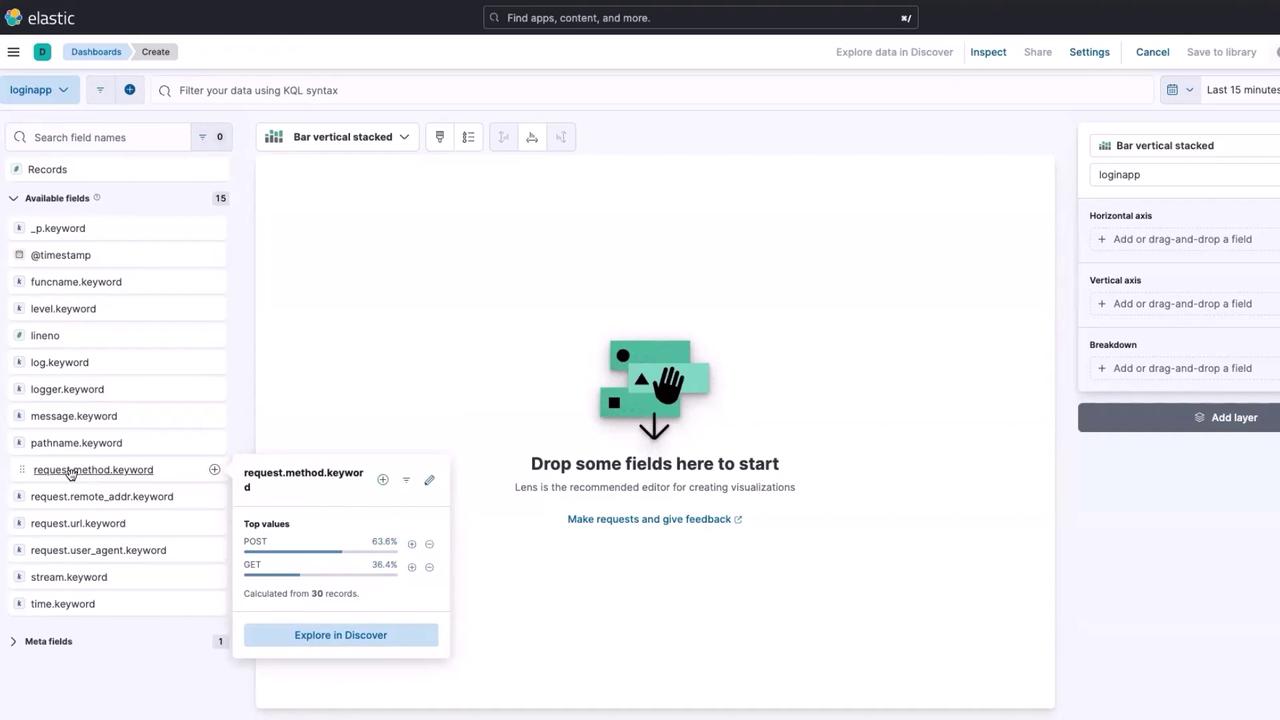
Drag and drop the field into the center of the screen. Lens suggests the best visualization method based on your data. Choose the donut chart visualization to get a clear, visual comparison of GET versus POST requests.
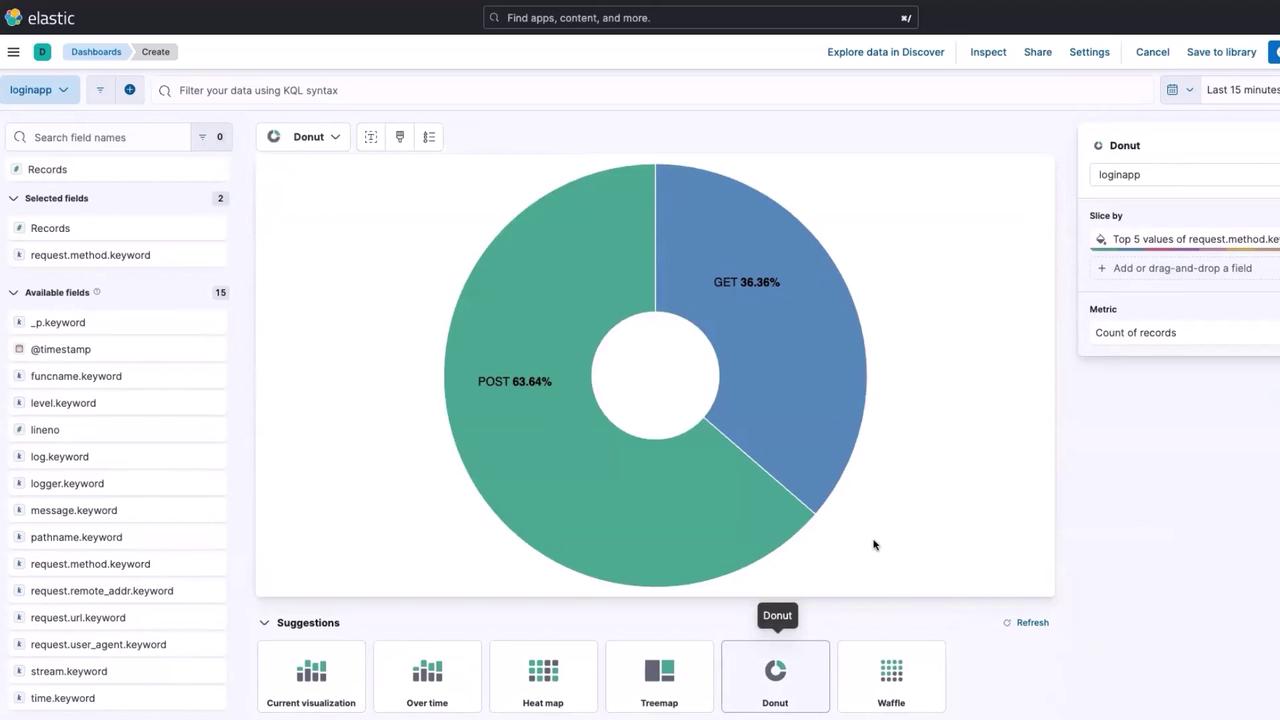
Click save and return to save the visualization. Name the chart “GET versus POST operation” and adjust its size if necessary. Next, add a panel by selecting Text and providing a description such as “This is a real-time dashboard for Login App.” Save your changes.
Adding More Log Information
Your application generates additional log information, which can help monitor its health. For example, tracking the number of logs entering Elasticsearch can differentiate between normal operations and potential issues.
To inspect these logs:
- Click on the field
level.keywordto see entries like info and warning messages. - Drag and drop the
level.keywordfield into the workspace. - Change the visualization type to an area chart and choose the “area over time” option to visualize log levels chronologically.
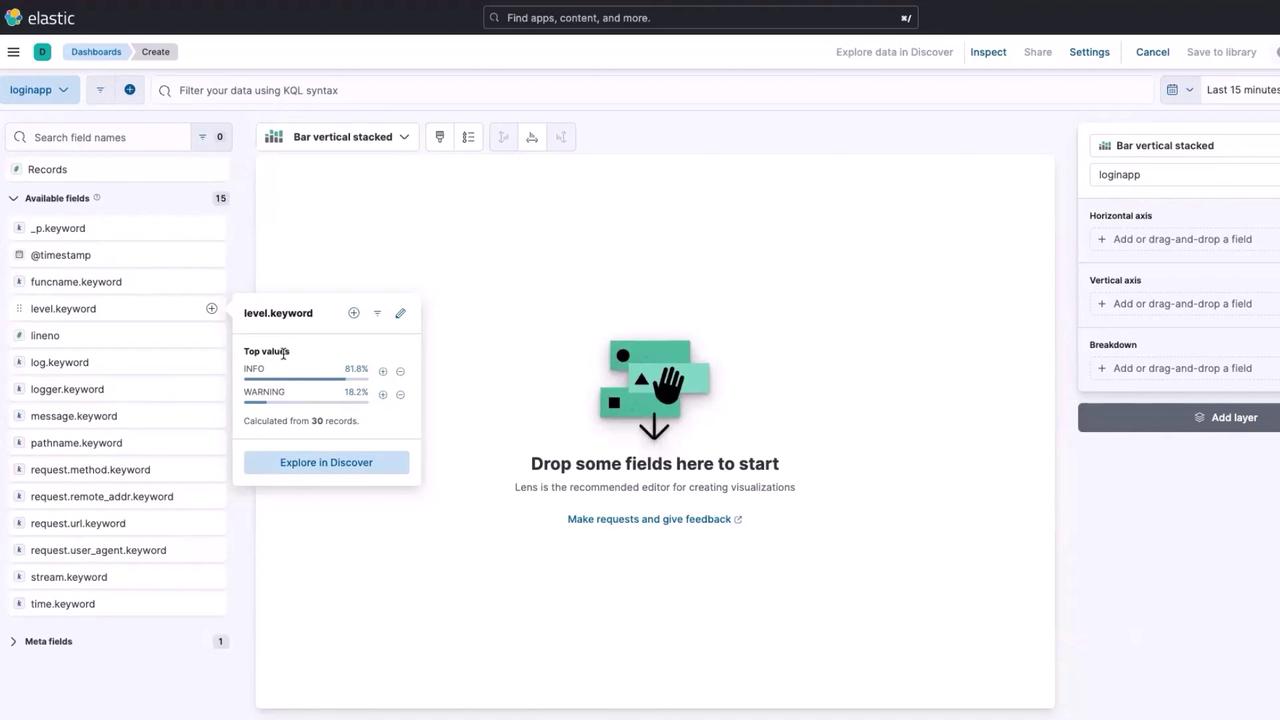
This area chart effectively visualizes the info and warning logs over time. Although the chart might seem cluttered at first, it will provide more insights as data accumulates. Once adjusted, click save.
To test this visualization, return to the Login App and attempt several logins (around 4 or 5 times). Then, refresh your dashboard. By default, the dashboard shows data for the last 15 minutes. To extend this:
- Click the time range button.
- Select “30 minutes ago” and click update.
This adjustment will update the graph with new data.
Note
If no data appears, it might indicate an issue with the application, Fluent Bit, or Elasticsearch. Further investigation is required.
Monitoring Endpoints
Monitoring endpoint traffic is crucial for load distribution insights. Follow these steps to track endpoint requests:
- Locate the field
requesturl.keywordto view endpoints (e.g., login, second-level authentication, welcome page). - Drag and drop
requesturl.keywordinto the Lens workspace. - Switch the visualization to an “overtime” chart to see the number of requests hitting each endpoint over time.
For example, the dashboard might display around 10 requests for /login, 4 for second-level authentication, and 2 for the welcome endpoint. Save this visualization as “endpoint monitoring.”
Tracking Successful and Failed Logins
To monitor login success and failures:
Successful Logins
Click the three horizontal lines and navigate to Discover.
In the search bar, enter the following KQL query:
message: "login successful"Update the results and then click the Lens button to transform these results into a visualization.
Choose Count Overall to display the data as a single numerical value.
Save the visualization as “login successful count” and add it to your dashboard at the top.
Failed Logins
Again navigate to Discover.
Modify the query to:
message: "failed"Click update and then the Lens button.
Select Count Overall to visualize the count of failed login attempts.
Save this visualization as “count for failed login attempts,” and position it alongside the successful login count on the dashboard.
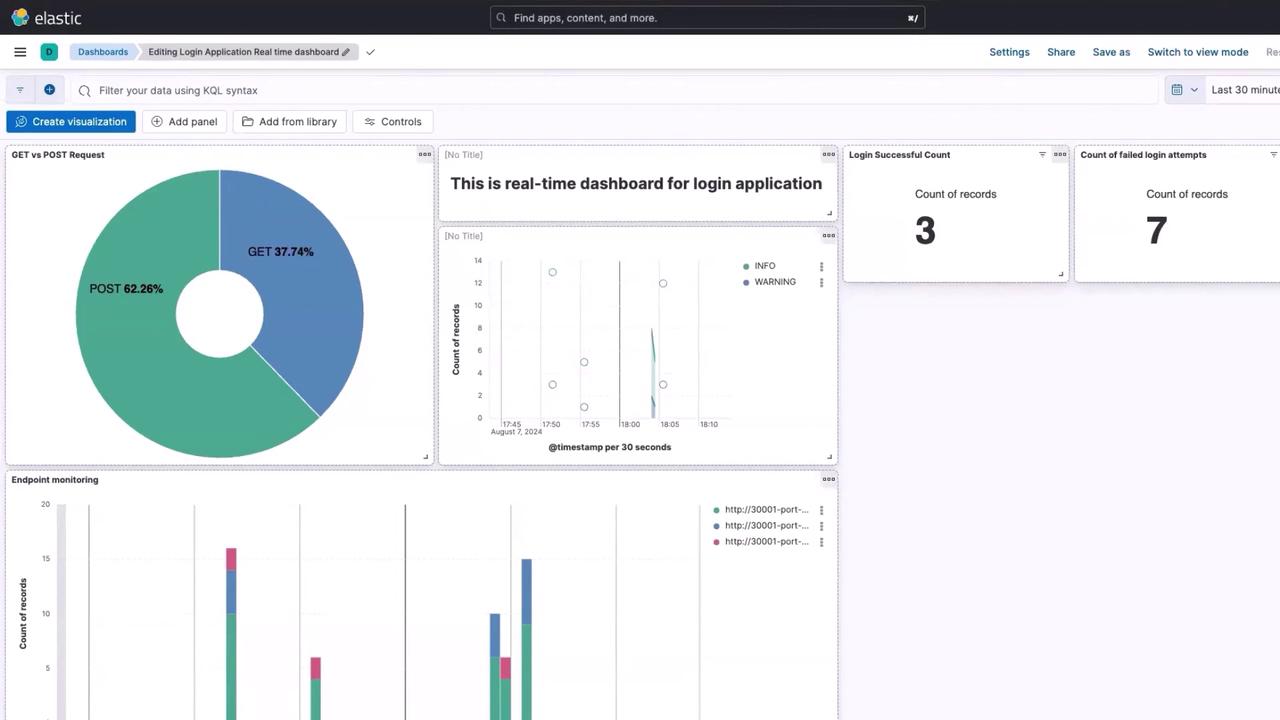
Enhancing Visual Cues with Color Coding
To make the dashboard more intuitive, you can highlight when the number of failed logins exceeds a certain threshold. For example, if there are more than 10 failed login attempts in the last 30 minutes, the number can appear in red to signal a potential issue.
Follow these steps to adjust the failed logins visualization:
- Click the three dots and select Edit Visualization.
- Choose Edit in Lens and click on the Count of Records series.
- Scroll down to the “Color by value” option.
- Toggle the color settings and set thresholds—define a lower threshold (for example, 4.66 with yellow) and a higher threshold (10 with red).
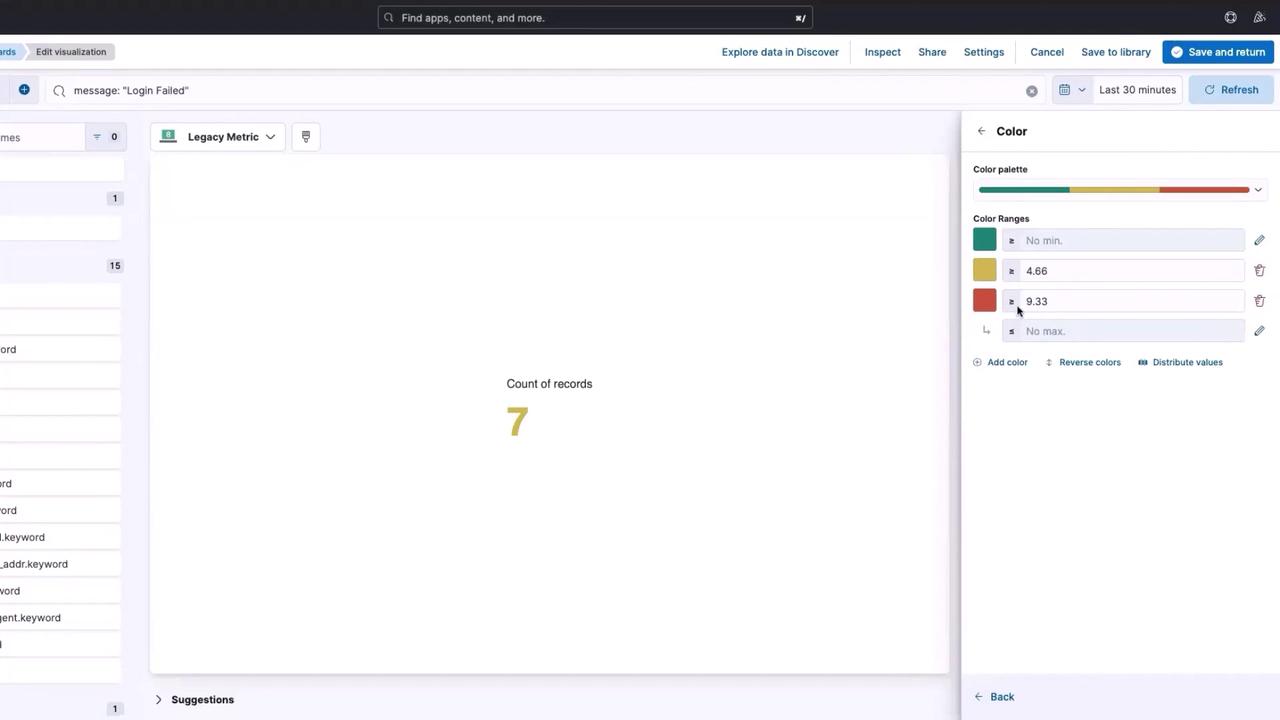
After saving and returning to the dashboard, test the functionality by generating some failed login attempts. If the failed login count exceeds 10, the number should automatically turn red.
Warning
If the color coding does not reflect the expected thresholds, double-check your settings and ensure that the data is being ingested correctly.
Conclusion
You have built a fully functional, real-time dashboard for the Login App using Elasticsearch and Kibana. This lesson walked you through the entire process—from generating logs with Fluent Bit to creating visualizations in Kibana using Lens. These visualizations help monitor GET vs. POST requests, log levels, endpoint traffic, and login success versus failure.
Thank you for following along, and I look forward to our next lesson!
For further reading and related resources, consider checking out the following:
Happy monitoring!
Watch Video
Watch video content